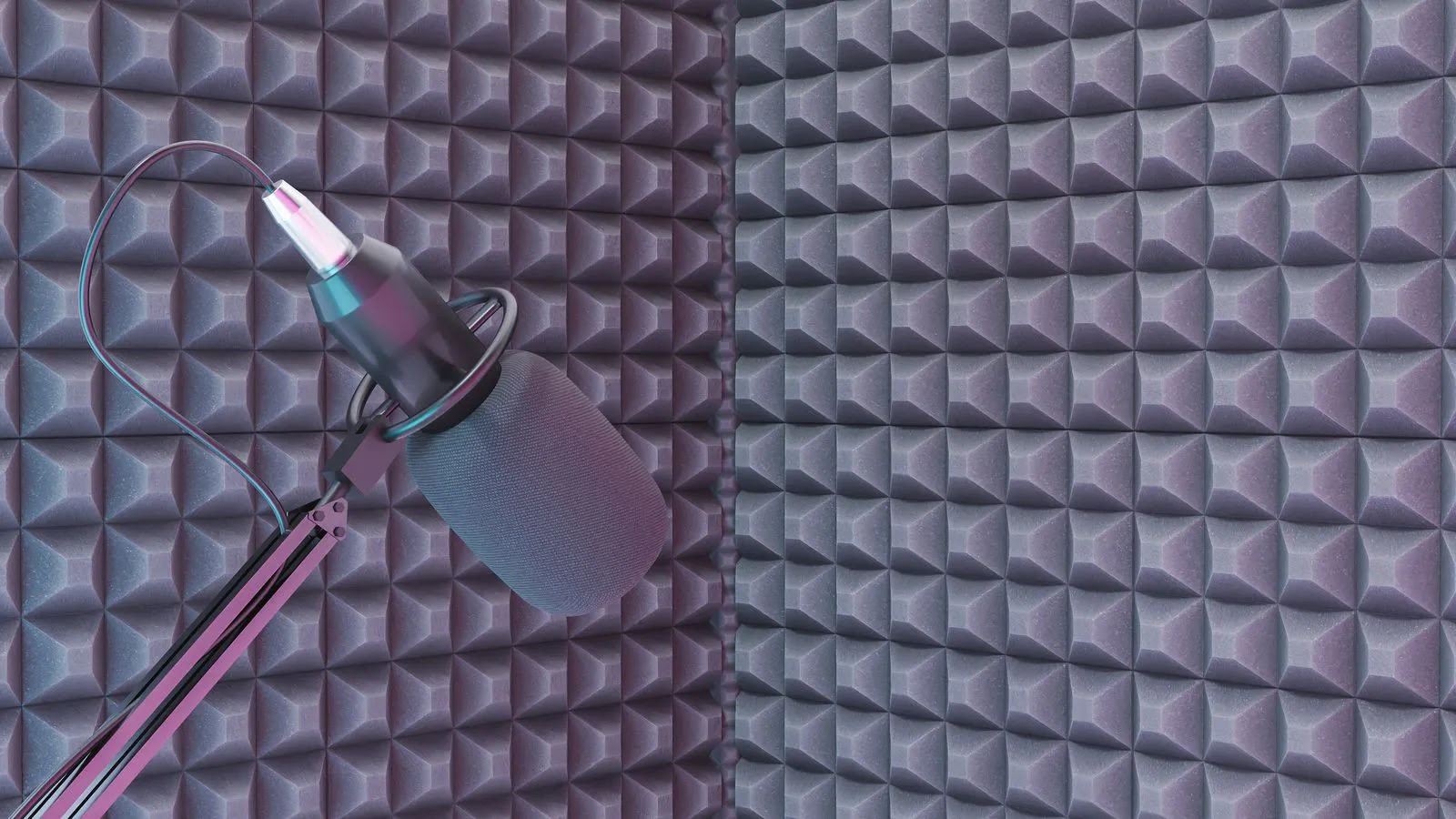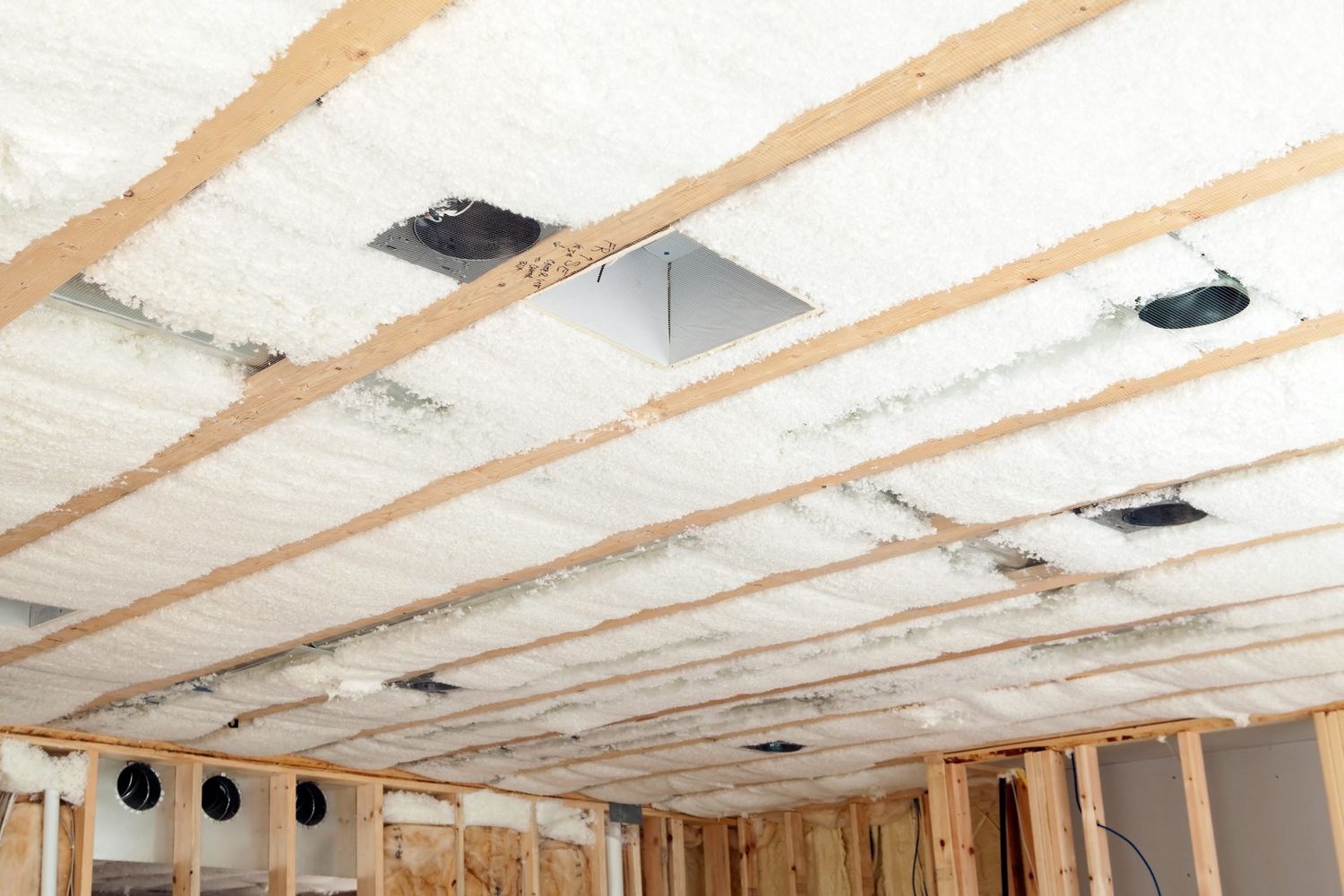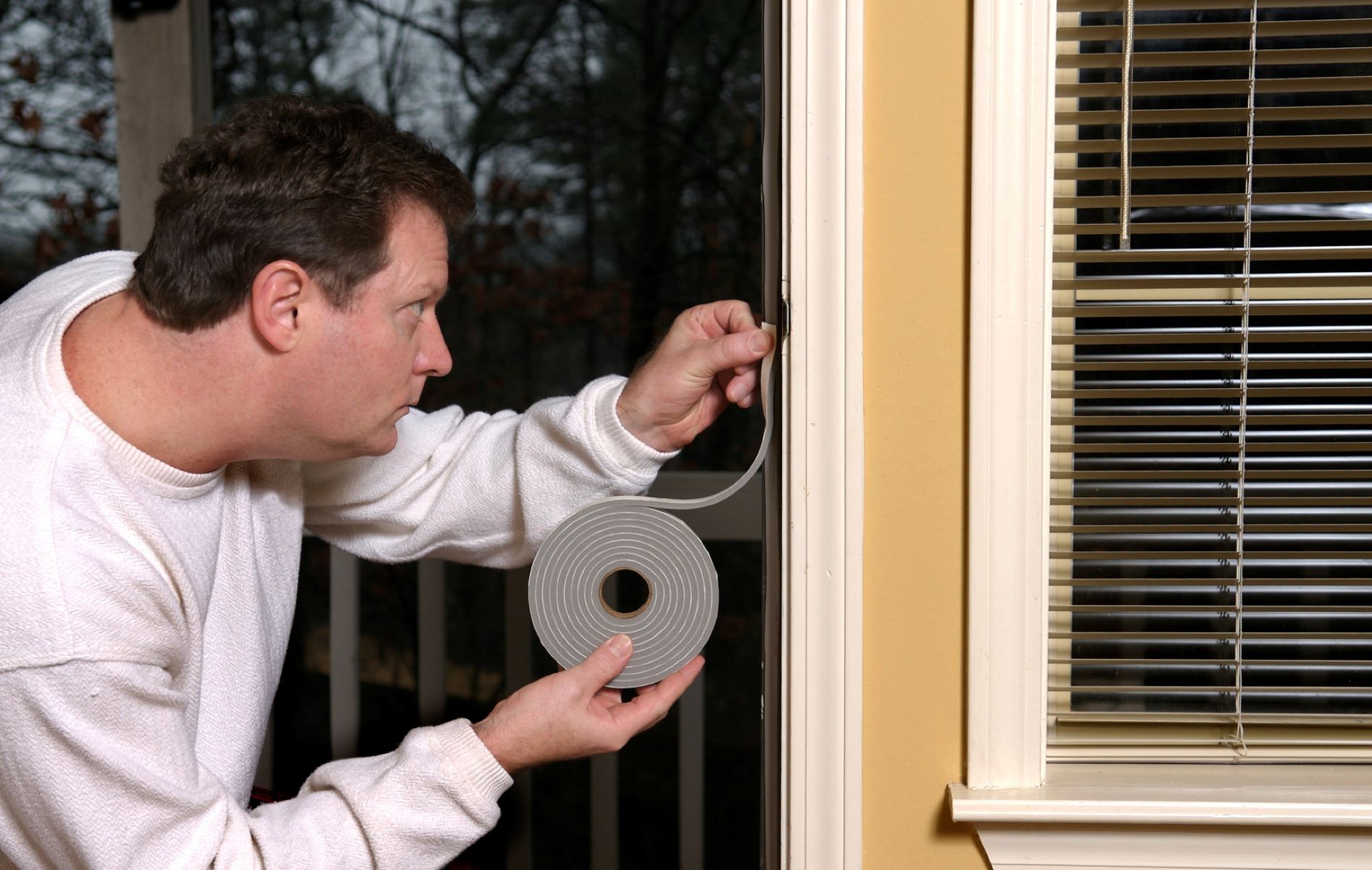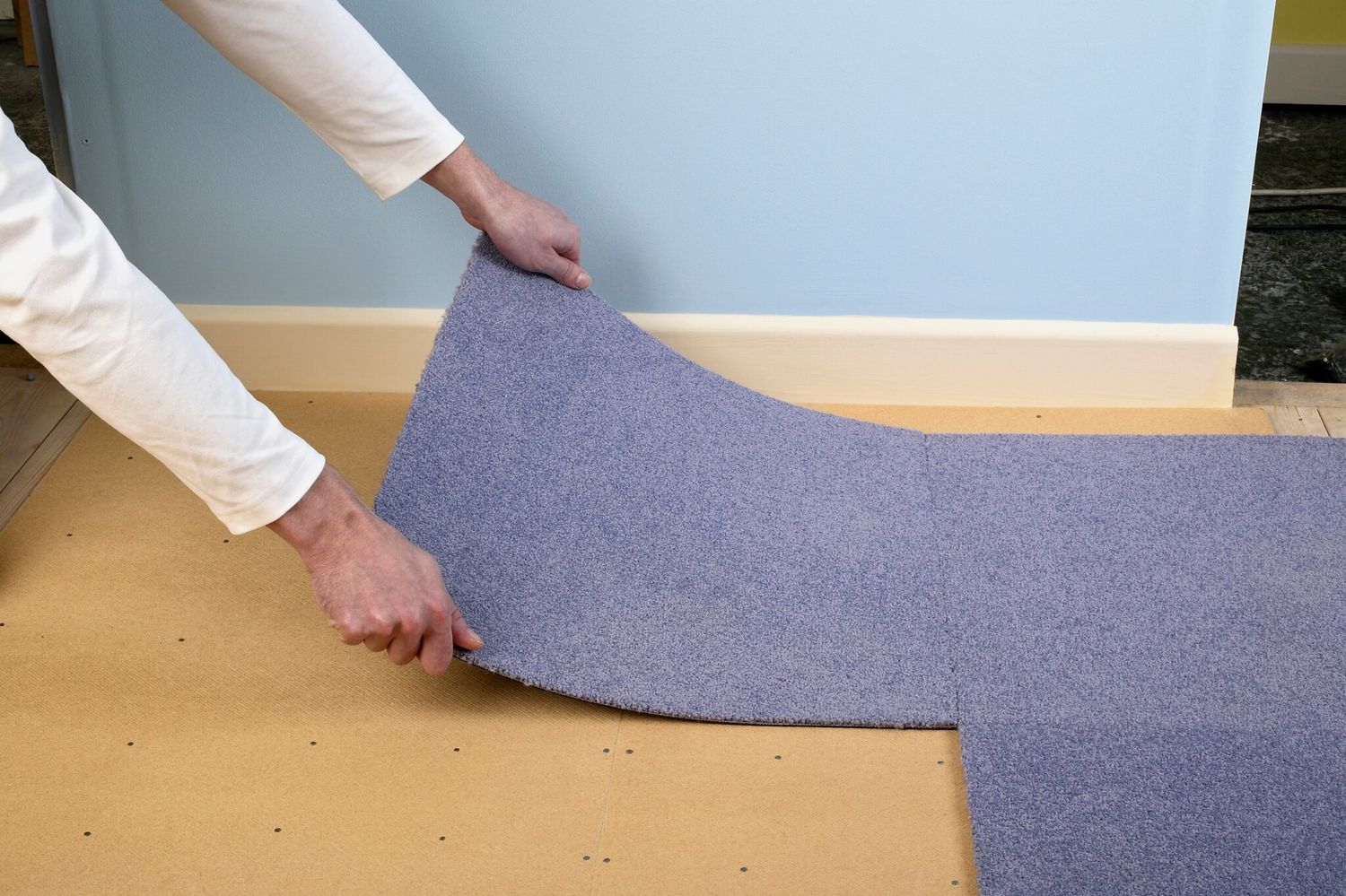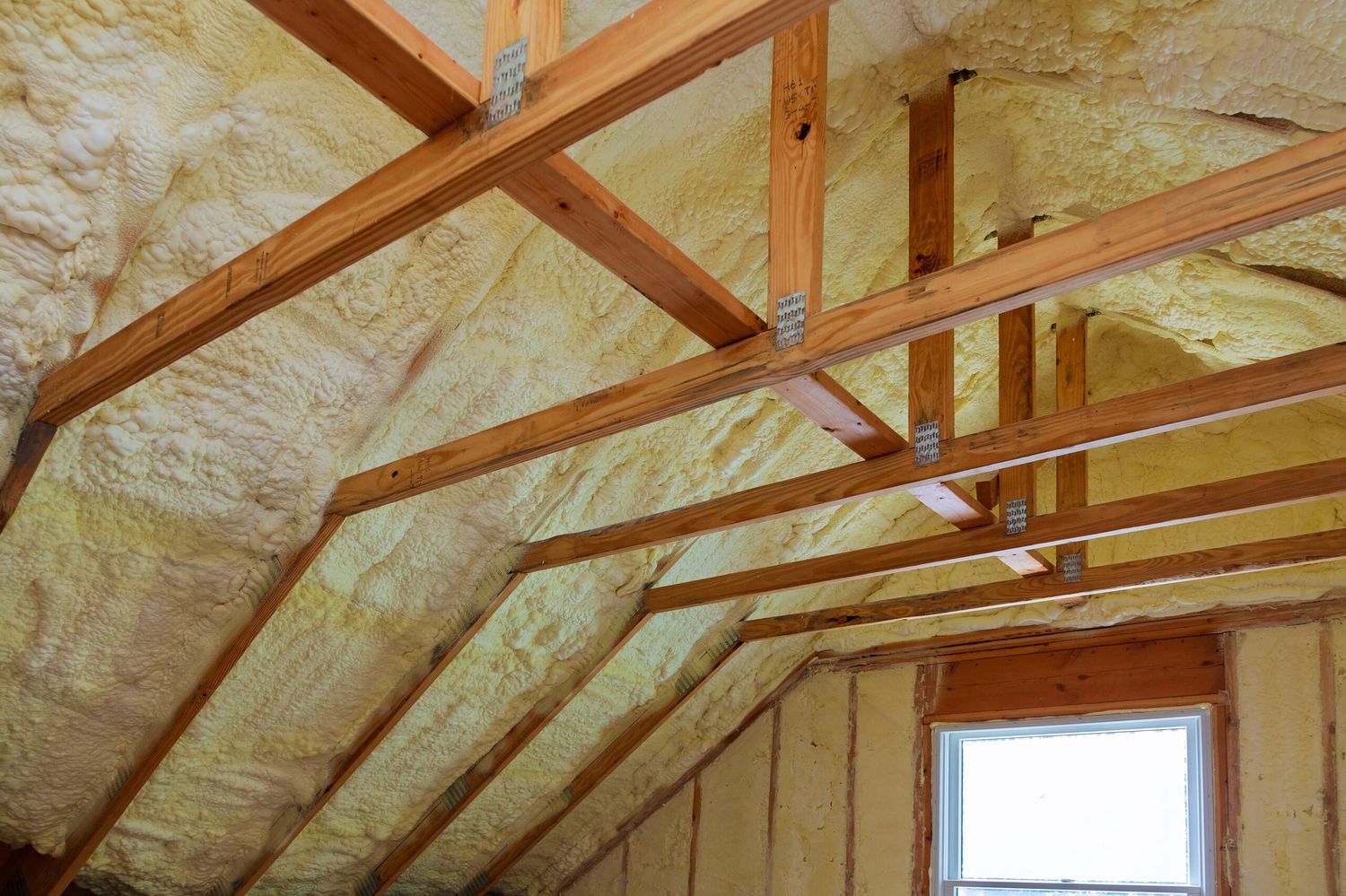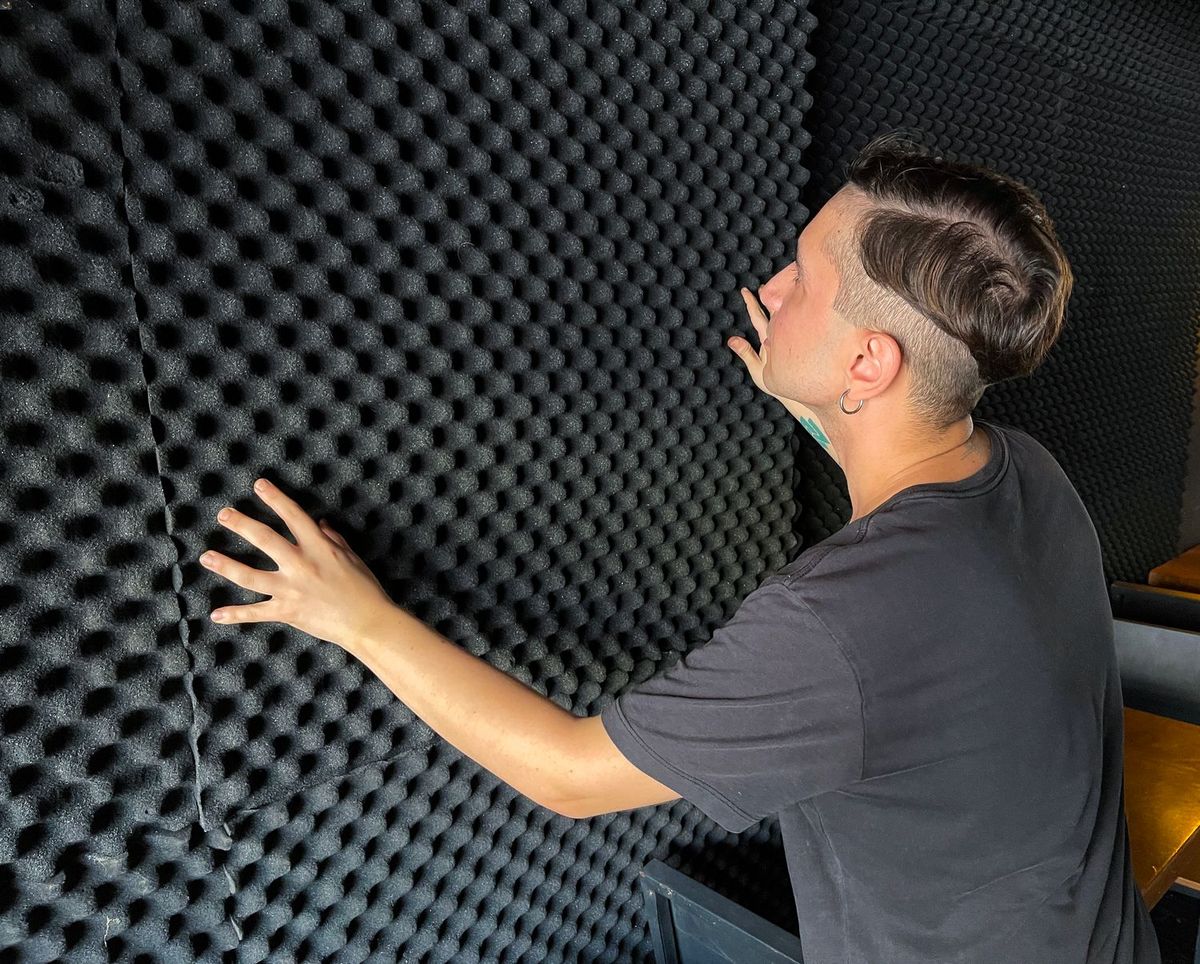Home>Production & Technology>Soundproofing>What Is The Best Soundproofing Underlayment
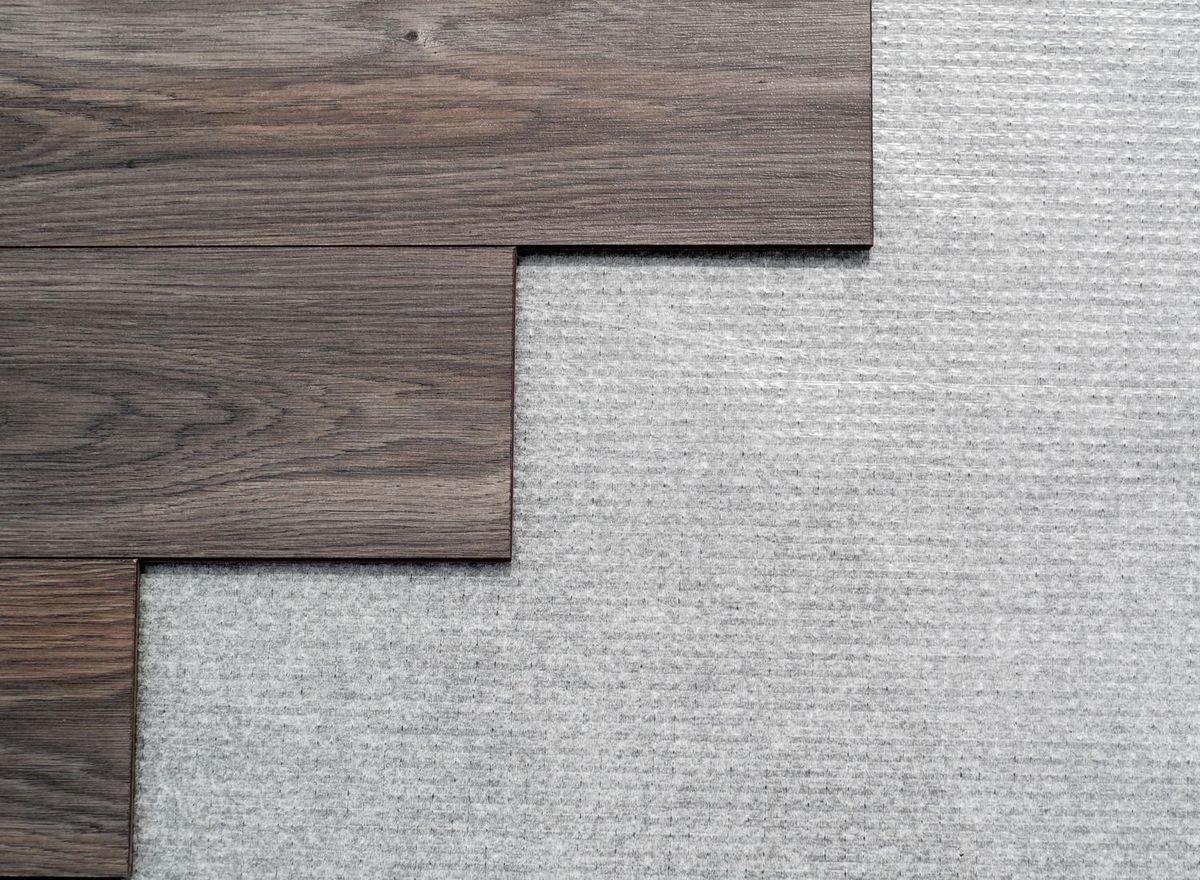

Soundproofing
What Is The Best Soundproofing Underlayment
Published: January 26, 2024
Discover the best soundproofing underlayment to create a peaceful and noise-free environment. Enhance the acoustics of your space with our top-rated products.
(Many of the links in this article redirect to a specific reviewed product. Your purchase of these products through affiliate links helps to generate commission for AudioLover.com, at no extra cost. Learn more)
Table of Contents
- Introduction
- Importance of Soundproofing Underlayment
- Factors to Consider when Choosing Soundproofing Underlayment
- Different Types of Soundproofing Underlayment
- Foam Underlayment
- Cork Underlayment
- Rubber Underlayment
- Felt Underlayment
- Benefits of using Soundproofing Underlayment
- Noise Reduction
- Enhanced Thermal Insulation
- Moisture and Vapor Barrier
- Impact and Footfall Sound Absorption
- How to Install Soundproofing Underlayment
- Preparing the Subfloor
- Properly Measuring and Cutting the Underlayment
- Installing the Underlayment
- Maintenance and Care for Soundproofing Underlayment
- Conclusion
Introduction
Soundproofing underlayment is a crucial element in creating a comfortable and peaceful environment in your home or office. Whether you’re dealing with noisy neighbors, footfall noise, or street traffic, soundproofing underlayment can significantly reduce unwanted noise levels and improve overall acoustic insulation. In this article, we will explore the importance of soundproofing underlayment, the various types available, and the benefits they offer.
Many people underestimate the impact of noise on their daily lives. Excessive noise can not only affect concentration and productivity, but it can also disrupt sleep patterns and increase stress levels. Soundproofing underlayment acts as a buffer, absorbing and minimizing sound transmission between floors, rooms, and spaces.
When it comes to selecting the best soundproofing underlayment, it’s essential to consider a few factors. The type of flooring, the level of sound insulation required, and the budget are all critical considerations. Different types of underlayment materials offer varying levels of soundproofing performance, so choosing the right one for your specific needs is crucial.
In the following sections, we will discuss the various types of soundproofing underlayment available on the market today, their benefits, and how to properly install and maintain them. Whether you’re renovating, building new construction, or simply looking to improve the acoustic environment of your space, understanding soundproofing underlayment is essential.
By investing in high-quality soundproofing underlayment, you can create an oasis of tranquility in your home or office. Let’s delve into the world of soundproofing underlayment and discover how it can transform your living and working space.
Importance of Soundproofing Underlayment
Soundproofing underlayment plays a vital role in creating a peaceful and quiet environment by reducing the transmission of noise from one area to another. Whether it’s the sound of footsteps echoing through your home, the vibrations from street traffic, or even airborne noises like music or conversation, soundproofing underlayment can significantly minimize these disturbances. Here are some key reasons why soundproofing underlayment is important:
1. Noise Reduction: One of the primary reasons for using soundproofing underlayment is to reduce noise. By adding a layer of underlayment beneath your flooring, you can effectively absorb and block sound waves, preventing them from traveling to other areas of your home or office. This creates a quieter and more peaceful living or working environment, free from distracting and unwanted noise.
2. Improved Privacy: Soundproofing underlayment is particularly beneficial for spaces where privacy is essential, such as bedrooms, offices, or conference rooms. It prevents conversations and other sounds from being overheard, enhancing privacy and confidentiality in these areas.
3. Enhanced Acoustic Insulation: Soundproofing underlayment improves the overall acoustic insulation of a space. It helps to control sound reflections, reverberations, and echoes, creating a more balanced and pleasant sound environment. This is especially important in rooms that require good acoustics, such as music studios, theaters, or home theaters.
4. Comfort and Well-being: Excessive noise can have a negative impact on our well-being and quality of life. It can lead to stress, sleep disturbances, and reduced productivity. By incorporating soundproofing underlayment, you can create a more comfortable and serene living or working environment that promotes relaxation, concentration, and overall well-being.
5. Energy Efficiency: Soundproofing underlayment also contributes to energy efficiency by providing an additional layer of insulation. It helps to reduce heat loss or gain through the floor, leading to improved thermal efficiency and lower energy bills. This is particularly important in colder climates, where maintaining a comfortable indoor temperature is crucial.
Overall, soundproofing underlayment is a vital component in creating a peaceful and noise-free environment. It not only improves the quality of life but also enhances privacy, acoustic performance, and energy efficiency. Whether you live in a busy urban area or a noisy apartment building, incorporating soundproofing underlayment is a wise investment that pays off in terms of comfort and tranquility.
Factors to Consider when Choosing Soundproofing Underlayment
When selecting soundproofing underlayment, it’s important to consider several factors to ensure you choose the right product for your specific needs. Here are some key factors to consider:
1. Type of Flooring: The type of flooring you have will play a role in determining the type of soundproofing underlayment you need. Different underlayment materials are suitable for specific flooring types, such as hardwood, laminate, carpet, or tile. It’s essential to choose an underlayment that is compatible with your flooring to ensure optimal performance.
2. Soundproofing Performance: Consider the level of soundproofing performance you require. If you’re dealing with high levels of noise or have specific acoustic needs, you may need a soundproofing underlayment with a higher Sound Transmission Class (STC) rating. The STC rating indicates how effective the underlayment is at reducing sound transmission. Higher STC ratings offer better soundproofing capabilities.
3. Thickness and Density: The thickness and density of the underlayment will affect its soundproofing performance. Thicker and denser underlayments generally offer better noise reduction as they provide more mass to absorb and attenuate sound waves. However, it’s important to consider the installation requirements and any height restrictions when selecting the thickness of the underlayment.
4. Moisture Resistance: If you’re installing the underlayment in areas prone to moisture, such as basements or bathrooms, it’s crucial to choose a soundproofing underlayment with moisture resistance properties. This will help prevent water damage, mold, and mildew growth, ensuring the longevity and effectiveness of the underlayment.
5. Installation Ease: Consider the ease of installation when choosing soundproofing underlayment. Some underlayments come with self-adhesive backing or interlocking systems that make installation straightforward and hassle-free. If you plan to install the underlayment yourself, opt for a product that is easy to install and doesn’t require specialized tools.
6. Budget: Set a budget for your soundproofing project and consider the cost of the underlayment. Different types and brands of underlayments vary in price. While it’s important to choose a product that fits within your budget, also consider the performance and longevity of the underlayment. Investing in a higher-quality underlayment may be worth the cost in the long run.
7. Environmental Considerations: If sustainability is important to you, look for soundproofing underlayment that is made from eco-friendly materials or has certifications such as LEED (Leadership in Energy and Environmental Design). These products have low VOC (volatile organic compounds) emissions and are healthier for both the environment and your indoor air quality.
By considering these factors when choosing soundproofing underlayment, you can select a product that meets your specific requirements and provides effective noise reduction for a more peaceful and comfortable living or working space.
Different Types of Soundproofing Underlayment
There are various types of soundproofing underlayment available on the market, each offering unique characteristics and benefits. Understanding the different options will help you choose the most suitable underlayment for your specific needs. Here are some of the most common types:
1. Foam Underlayment: Foam underlayment is a popular choice for soundproofing due to its excellent noise reduction properties. It is lightweight, easy to install, and affordable. Foam underlayment comes in different thicknesses and densities, allowing you to choose the level of sound insulation you require. It is commonly used under laminate, engineered wood, and luxury vinyl flooring.
2. Cork Underlayment: Cork underlayment is a natural and eco-friendly option for soundproofing. It offers excellent noise reduction and thermal insulation properties. Cork is known for its ability to absorb impact and reduce vibration, making it an ideal choice for areas with high foot traffic or in multi-story buildings. It is often used under hardwood flooring, tiles, and vinyl.
3. Rubber Underlayment: Rubber underlayment is highly effective at reducing impact noise and is commonly used in commercial settings like gyms, offices, and apartments. It provides excellent sound absorption and is durable and long-lasting. Rubber underlayment comes in various forms, including rolls and tiles, and is suitable for a range of flooring types.
4. Felt Underlayment: Felt underlayment is a dense and resilient material that offers good soundproofing properties. It is often used in combination with other underlayments to enhance the overall noise reduction. Felt underlayment is commonly used under hardwood and laminate flooring and provides a cushioning effect, making it comfortable to walk on.
5. Combination Underlayment: Combination underlayment consists of multiple layers, typically combining foam, rubber, and/or felt. This type of underlayment provides a comprehensive solution for both impact and airborne noise reduction. Combination underlayments effectively minimize sound transmission and are suitable for various flooring types, including laminate, hardwood, and engineered wood.
It’s important to note that the choice of underlayment should be based on the specific requirements of your space, such as the type of flooring, the level of soundproofing needed, and any specific acoustic considerations. Consulting with a soundproofing professional or flooring specialist can help determine the best type of underlayment for your needs.
By selecting the appropriate soundproofing underlayment, you can effectively reduce unwanted noise and create a more peaceful and comfortable environment in your home or office.
Foam Underlayment
Foam underlayment is a popular choice for soundproofing due to its versatility, affordability, and excellent noise reduction properties. It is a lightweight material that is easy to install and provides cushioning and insulation benefits. Foam underlayment comes in various types, including polyethylene (PE) foam and polyurethane (PU) foam, each with its own unique characteristics.
Noise Reduction: Foam underlayment is highly effective at reducing impact noise, such as footsteps or furniture moving. It absorbs and isolates the vibrations caused by these impacts, preventing them from transferring to the floor below. Additionally, foam underlayment provides considerable noise reduction for airborne sounds, such as voices or music, creating a quieter and more peaceful environment.
Compatibility: Foam underlayment is compatible with a wide range of flooring types, including laminate, engineered wood, and luxury vinyl planks. It can also be used with carpet, providing extra cushioning and insulation. Foam underlayment is available in different thicknesses and densities, allowing you to select the appropriate level of sound insulation for your specific needs.
Installation: Installing foam underlayment is relatively easy and can be done as a DIY project. Most foam underlayments come with a self-adhesive backing, making installation hassle-free. Simply roll out the underlayment and peel off the backing to expose the adhesive. Press the underlayment firmly onto the subfloor, ensuring a smooth and even surface. It’s important to read and follow the manufacturer’s installation instructions for the best results.
Thermal Insulation: In addition to soundproofing, foam underlayment also provides thermal insulation benefits. It helps to retain heat during colder months and keeps rooms cool in warmer weather. This thermal barrier improves energy efficiency and can contribute to lower heating and cooling costs.
Moisture Resistance: Some foam underlayments come with a moisture barrier backing, providing protection against moisture and vapor. This is particularly useful in areas such as basements or bathrooms where excess moisture may be a concern. The moisture barrier prevents water damage, mold, and mildew growth, ensuring the longevity and effectiveness of the underlayment.
Overall, foam underlayment is a versatile and cost-effective solution for soundproofing your floors. Its noise reduction capabilities, ease of installation, compatibility with various flooring types, and additional benefits like thermal insulation make it a popular choice among homeowners and contractors. Whether you’re renovating your home or improving the sound environment in your workspace, foam underlayment is worth considering for its excellent soundproofing properties.
Cork Underlayment
Cork underlayment is a natural and eco-friendly option for soundproofing, known for its excellent noise reduction properties and versatility. Made from the bark of the cork oak tree, cork underlayment offers a sustainable and renewable solution for reducing unwanted noise and vibrations.
Noise Reduction: Cork underlayment is highly effective at reducing both impact noise and airborne sound transmission. It absorbs and isolates vibrations caused by footsteps or furniture movement, preventing them from transferring to the floor below. The cellular structure of cork also helps to block airborne sound, creating a quieter and more peaceful living or working environment.
Thermal Insulation: One of the unique properties of cork is its excellent thermal insulation capabilities. Cork traps air within its cellular structure, providing a natural barrier against heat transfer. This thermal insulation helps to maintain comfortable indoor temperatures, reduces energy consumption, and can contribute to lower heating and cooling costs.
Comfort and Cushioning: Cork underlayment provides a cushioning effect underfoot, adding a layer of comfort to your floors. It has a slight give and resilience, making it comfortable to walk or stand on. This cushioning property also helps to alleviate strain on joints and muscles, especially in areas where prolonged standing is involved, such as kitchens or commercial spaces.
Mold and Mildew Resistance: Cork naturally resists the growth of mold and mildew, making it an ideal choice for areas with potential moisture concerns, such as basements or bathrooms. The natural properties of cork inhibit the development of these harmful organisms, contributing to a healthier and cleaner indoor environment.
Eco-Friendly: Cork underlayment is a sustainable and eco-friendly option for soundproofing. The extraction of cork does not harm the cork oak trees, as only the bark is harvested, allowing the trees to regenerate. Additionally, the production process of cork underlayment has a low environmental impact compared to other materials.
Compatibility: Cork underlayment is versatile and can be used under various flooring types, including hardwood, laminate, tile, and vinyl. It is available in different thicknesses to meet different soundproofing needs, and it can be easily cut to size and shape for a custom fit during installation.
Overall, cork underlayment offers an excellent combination of soundproofing, thermal insulation, comfort, and eco-friendliness. Its natural properties make it an attractive choice for those looking for a sustainable solution to reduce noise and improve the acoustic environment in their living or working space. Consider cork underlayment if you’re seeking a durable and environmentally-friendly option for soundproofing your floors.
Rubber Underlayment
Rubber underlayment is a highly effective option for soundproofing, particularly in commercial settings or areas with high impact noise. Made from recycled rubber materials, this type of underlayment provides excellent noise reduction and impact insulation.
Noise Reduction: Rubber underlayment is known for its superior ability to reduce impact noise. It effectively absorbs and isolates vibrations caused by footsteps, heavy furniture, or other physical impacts, preventing them from traveling to the floor below. This results in a significant reduction in noise transmission, creating a quieter and more peaceful environment.
Impact Insulation: One of the key strengths of rubber underlayment is its exceptional impact insulation. It helps to absorb and dissipate the energy generated by physical impacts, reducing the transmission of sound and vibrations between floors. This makes it an ideal choice for areas with high foot traffic or where impact noise is a concern, such as gyms, offices, or multi-story buildings.
Durable and Long-Lasting: Rubber underlayment is renowned for its durability and longevity. It is a resilient material that can withstand heavy use and maintain its soundproofing properties over time. Rubber underlayment is resistant to wear and tear, making it a reliable solution for high-traffic areas or spaces that require long-lasting noise reduction.
Easy Installation: Rubber underlayment is typically available in rolls or interlocking tiles, making installation straightforward. It can be easily cut to fit the desired area and laid directly over the subfloor. Some rubber underlayments have a self-adhesive backing or interlocking systems, eliminating the need for additional adhesives or fasteners.
Moisture Resistance: Rubber underlayment is naturally moisture-resistant, making it suitable for areas exposed to damp conditions or potential water spills. It inhibits the growth of mold and mildew, ensuring a healthier indoor environment. However, it’s important to note that while rubber is resistant to moisture, it is not a complete moisture barrier, so proper waterproofing measures should still be followed.
Compatibility: Rubber underlayment is compatible with a wide range of flooring types, including hardwood, laminate, tile, and carpet. It provides a stable and supportive base for various types of flooring installations, adding an extra layer of noise reduction and comfort.
Overall, rubber underlayment is an excellent choice for soundproofing applications in commercial settings or areas with high impact noise. Its outstanding impact insulation, durability, moisture resistance, and compatibility with different flooring types make it a reliable solution for reducing noise transmission and creating a more peaceful environment.
Felt Underlayment
Felt underlayment is a dense and resilient material commonly used for soundproofing and providing cushioning under various flooring types. It offers excellent noise reduction properties, impact absorption, and a comfortable walking surface.
Noise Reduction: Felt underlayment effectively reduces both impact noise and airborne sounds. It absorbs and isolates vibrations caused by footsteps, furniture movement, or other physical impacts, preventing them from transferring to the floor below. Additionally, the dense nature of felt helps to block airborne sound waves, creating a quieter and more pleasant environment.
Impact Absorption: One of the key benefits of felt underlayment is its ability to absorb and cushion impacts. It provides a supportive layer that helps reduce the stress on flooring materials, prolonging their lifespan. This is particularly beneficial in high-traffic areas or rooms where heavy objects are likely to be moved, as it helps minimize damage and noise caused by impacts.
Comfortable Walking Surface: Felt underlayment offers a soft and comfortable surface to walk on. Its cushioning effect makes it enjoyable to walk or stand on for long periods, reducing fatigue and strain on joints. This can be especially beneficial in areas like bedrooms, living rooms, or playrooms, where comfort underfoot is a priority.
Easy Installation: Felt underlayment is typically available in rolls or sheets, making installation simple. It can be cut to size and easily laid over the subfloor. Some felt underlayment products have a self-adhesive backing, eliminating the need for additional adhesives or fasteners. This makes installation quick and hassle-free, especially for DIY enthusiasts.
Compatibility: Felt underlayment is compatible with a variety of flooring types, including hardwood, laminate, and engineered wood. It provides a smooth and stable surface for these materials, enhancing their overall performance and noise reduction capabilities. Proper compatibility and installation guidelines should be followed to ensure the best results.
Durability: Felt underlayment is designed to withstand wear and tear, ensuring long-lasting performance. It is a durable material that can effectively withstand heavy foot traffic and furniture placement without degrading its soundproofing qualities. The density and thickness of the felt contribute to its durability and overall efficacy as a soundproofing underlayment.
Felt underlayment is a reliable choice for soundproofing floors, providing excellent noise reduction, impact absorption, and a comfortable surface to walk on. Whether it’s for residential or commercial applications, felt underlayment offers a practical option for creating a quieter and more enjoyable environment.
Benefits of using Soundproofing Underlayment
Using soundproofing underlayment offers a range of benefits, making it a worthwhile investment for homeowners and businesses alike. Here are some key advantages of using soundproofing underlayment:
1. Noise Reduction: The primary benefit of soundproofing underlayment is its ability to significantly reduce noise transmission. It absorbs and dampens sound waves, preventing them from traveling through floors and walls. This creates a quieter and more peaceful environment, free from the distractions of outside noise or sound transfer between rooms.
2. Enhanced Thermal Insulation: Soundproofing underlayment often provides additional thermal insulation benefits. It prevents heat loss through the floor and helps maintain a more comfortable indoor temperature. This can lead to energy savings and reduced heating and cooling costs, making soundproofing underlayment a practical choice for improving energy efficiency.
3. Moisture and Vapor Barrier: Certain types of soundproofing underlayment come with moisture and vapor barrier properties, protecting against water damage, mold, and mildew growth. This is especially important in areas prone to moisture, such as basements, bathrooms, or kitchens. The moisture barrier enhances the longevity and performance of both the underlayment and the flooring above it.
4. Impact and Footfall Sound Absorption: Soundproofing underlayment is effective at reducing impact noise caused by footsteps, furniture movement, or other physical impacts. It absorbs and isolates vibrations, preventing them from traveling through the floor structure. This creates a more comfortable and quiet living or working environment, particularly in multi-story buildings or areas with high foot traffic.
5. Improved Acoustic Performance: Soundproofing underlayment improves the overall acoustic quality of a space by reducing reverberations, echoes, and sound reflections. This is particularly valuable in environments where good acoustics are critical, such as music studios, theaters, or home entertainment rooms. With soundproofing underlayment, you can achieve a more balanced and enjoyable sound environment.
6. Floor Protection: Soundproofing underlayment serves as a protective layer for your floors, cushioning them against impacts and minimizing wear and tear. It helps reduce the risk of scratches, dents, and other damage, ensuring the longevity and appearance of your flooring. This is especially beneficial in high-traffic areas or spaces where heavy furniture is placed.
7. Versatility and Compatibility: Soundproofing underlayment is compatible with a wide range of flooring types, including hardwood, laminate, tile, and carpet. It can be easily installed during new construction or renovations. The versatility of soundproofing underlayment allows for its application in various residential and commercial settings.
By incorporating soundproofing underlayment, you can enjoy a quieter and more comfortable living or working environment, with reduced noise transmission, improved thermal insulation, and enhanced acoustics. The multiple benefits of soundproofing underlayment make it a valuable addition to any space, enhancing both the overall comfort and functionality.
Noise Reduction
Noise reduction is one of the primary benefits of using soundproofing underlayment. It significantly minimizes the transmission of unwanted noise, creating a more peaceful and serene environment in your home or office.
Soundproofing underlayment works by absorbing and dampening sound waves, preventing them from traveling through floors and walls and reducing noise transfer between different areas. Whether you’re dealing with airborne noise like voices or music, or impact noise such as footsteps or furniture movements, soundproofing underlayment can effectively decrease the volume and intensity of these sounds.
By reducing noise levels, soundproofing underlayment offers numerous advantages:
Improved Comfort: Excessive noise can be annoying and disruptive, affecting your comfort and well-being. With soundproofing underlayment, you can enjoy a quieter and more relaxing environment, free from the disturbances of outside noise or sound transfer from neighboring rooms or floors. This is particularly important in areas where peace and quiet are crucial, such as bedrooms, living rooms, or home offices.
Better Concentration: Noise can negatively impact concentration and productivity, making it difficult to focus on tasks or work. By reducing noise distractions, soundproofing underlayment improves your ability to concentrate and helps create an environment that is conducive to productivity. This is especially beneficial in offices, study areas, or any space where focused work or studying is required.
Enhanced Privacy: Soundproofing underlayment is particularly useful for maintaining privacy within your space. It prevents conversations or other sounds from being overheard by others, ensuring confidentiality and comfort. This is important in offices, conference rooms, or shared living spaces where privacy is desired.
Improved Sleep Quality: Excessive noise can disrupt sleep patterns, leading to reduced sleep quality and daytime fatigue. Soundproofing underlayment helps create a quieter and more peaceful bedroom environment, allowing for better rest and a more restorative sleep. This is especially valuable for individuals who live in noisy urban areas or have trouble sleeping through disturbances.
It’s important to note that while soundproofing underlayment can significantly reduce noise, it may not completely eliminate it. The level of noise reduction will depend on factors such as the type and thickness of the underlayment, the quality of the installation, and the specific soundproofing requirements of the space.
By incorporating soundproofing underlayment, you can enjoy a quieter and more serene environment that promotes comfort, concentration, privacy, and better sleep quality. The reduction in noise levels contributes to an overall improved quality of life and a more enjoyable living or working space.
Enhanced Thermal Insulation
Another significant benefit of using soundproofing underlayment is the enhanced thermal insulation it provides. Soundproofing underlayment can help improve the energy efficiency of your space by reducing heat loss or gain through the floors. This can lead to cost savings on heating and cooling while creating a more comfortable indoor environment.
Soundproofing underlayment acts as an additional thermal barrier, helping to maintain consistent temperatures within your home or office. Here are some advantages of the enhanced thermal insulation provided by soundproofing underlayment:
Reduced Energy Consumption: By minimizing heat loss during colder months and heat gain during warmer months, soundproofing underlayment helps to regulate indoor temperatures more efficiently. This can reduce the workload on your heating, ventilation, and air conditioning (HVAC) systems, resulting in energy savings and lower utility bills. It also contributes to a more sustainable and environmentally friendly living or working space.
Improved Comfort: The thermal insulation provided by soundproofing underlayment helps create a more comfortable indoor environment in all seasons. It minimizes the feeling of cold floors during winter, making your space cozier and more inviting. In hotter climates, it helps prevent the transfer of heat from the ground, keeping the floors cooler and more pleasant to walk on.
Temperature Control: Soundproofing underlayment helps to regulate the temperature within a room or building by reducing thermal conductivity. This means that the underlayment acts as a barrier, slowing down the transfer of heat through the floor. As a result, you can enjoy a more consistent and comfortable indoor temperature throughout the year, regardless of external weather conditions.
Noise not Temperature-borne: Soundproofing underlayment effectively separates sound and heat transmission through floors. This means that even though it primarily targets noise reduction, it also indirectly contributes to improved thermal insulation. By minimizing noise transfer, the underlayment prevents sound vibrations from carrying heat along with them. This ensures that the thermal insulation is not compromised by the presence of soundproofing measures.
When selecting soundproofing underlayment for enhanced thermal insulation, consider its thermal resistance capabilities, often measured in terms of R-value. The higher the R-value, the better the thermal insulation provided by the underlayment. It’s important to choose an underlayment with an appropriate R-value suitable for your climate and specific thermal insulation needs.
By incorporating soundproofing underlayment with enhanced thermal insulation, you can create a more energy-efficient and comfortable living or working space. The reduction in heat loss or gain through the floors contributes to cost savings, environmental sustainability, and overall improved indoor comfort throughout the year.
Moisture and Vapor Barrier
In addition to its soundproofing capabilities, one of the valuable benefits of using soundproofing underlayment is its ability to act as a moisture and vapor barrier. Certain types of underlayment are designed with properties that provide added protection against moisture, preventing water damage and the growth of mold and mildew.
Here are some advantages of incorporating soundproofing underlayment as a moisture and vapor barrier:
Prevention of Water Damage: Soundproofing underlayment with moisture barrier properties helps protect your floors from water damage. It acts as a barrier, preventing water from seeping through the subfloor and reaching the flooring material. This is particularly important in areas prone to moisture, such as basements, bathrooms, or kitchens, where water spills or leaks can occur.
Mold and Mildew Prevention: Moisture can create an environment conducive to the growth of mold and mildew, which can lead to respiratory issues and damage to the structural integrity of your home or office. By acting as a moisture barrier, soundproofing underlayment helps inhibit the growth of mold and mildew, ensuring a healthier indoor environment.
Longevity of the Underlayment and Flooring: Moisture can cause warping, swelling, or damage to flooring materials over time. By preventing moisture from reaching the flooring, soundproofing underlayment extends the lifespan of both the underlayment and the flooring above. This helps preserve the structural integrity and appearance of your floors, reducing the need for costly repairs or replacements.
Protection from Vapor Intrusion: Vapor intrusion occurs when moisture vapor from the ground rises through the subfloor and reaches the flooring. This can lead to damage, especially for materials sensitive to moisture such as wood or laminate. Soundproofing underlayment with vapor barrier properties helps mitigate this issue, acting as a protective layer between the flooring and the moisture vapor.
Healthier Indoor Environment: Moisture-related issues like mold and mildew growth can have a negative impact on indoor air quality and the health of occupants. By preventing moisture infiltration, soundproofing underlayment contributes to a healthier indoor environment by reducing the risk of allergens, respiratory problems, and musty odors associated with moisture-related issues.
It’s important to note that while soundproofing underlayment with moisture and vapor barrier properties provides protection, it is not a substitute for proper waterproofing measures in areas prone to excessive moisture. It’s essential to address any underlying moisture issues and follow recommended waterproofing practices to ensure optimal moisture protection.
By incorporating soundproofing underlayment as a moisture and vapor barrier, you can protect your floors, enhance indoor air quality, and ensure the longevity of both the underlayment and the flooring above. This additional layer of moisture protection provides peace of mind and contributes to a healthier, more durable living or working environment.
Impact and Footfall Sound Absorption
Soundproofing underlayment offers excellent impact and footfall sound absorption, making it an essential component in reducing noise caused by footsteps, furniture movements, or other physical impacts. This benefit provides a quieter and more enjoyable environment in both residential and commercial spaces.
Here are some advantages of incorporating soundproofing underlayment with impact and footfall sound absorption:
Reduced Impact Noise: Soundproofing underlayment effectively absorbs and isolates the vibrations generated by footsteps, heavy objects, or the movement of furniture. By minimizing the transfer of impact noise through the floors, it creates a quieter and more peaceful environment. This is particularly beneficial in multi-story buildings or areas with high foot traffic, such as apartments, offices, or entertainment spaces.
Improved Acoustic Performance: Impact and footfall sound absorption provided by soundproofing underlayment contribute to better overall acoustic performance. It helps to reduce reverberations and echoes, ensuring a more balanced and enjoyable sound environment. This is especially valuable in spaces where good acoustics are critical, such as music studios, theaters, or home entertainment rooms.
Enhanced Comfort: The absorption of impact and footfall noise improves the overall comfort of a space. It creates a more pleasant experience by minimizing the noise associated with walking, running, or moving furniture, resulting in a quieter and more relaxed environment. This can be particularly beneficial in environments where peace and tranquility are desired, such as bedrooms, living rooms, or study areas.
Prevention of Disturbances: Extraneous impact noises can be disruptive, causing distractions and discomfort. By absorbing impact noise, soundproofing underlayment helps to prevent disturbances, enhancing productivity, concentration, and relaxation. This is especially important in offices, libraries, or any space where a quiet atmosphere is essential.
Protection for Flooring: Soundproofing underlayment acts as a protective layer for your flooring, cushioning it against the impacts of foot traffic and heavy objects. It helps to reduce wear and tear, minimizing scratches, dents, and other damage that can occur over time. By preserving the integrity of your flooring, soundproofing underlayment extends its lifespan and maintains its aesthetic appeal and functionality.
When selecting soundproofing underlayment for impact and footfall sound absorption, consider the material’s density and thickness. A denser underlayment with a higher mass will typically provide better impact noise reduction. Also, make sure to choose an underlayment that is compatible with your flooring type to ensure optimal performance.
By incorporating soundproofing underlayment with impact and footfall sound absorption, you can significantly reduce noise caused by footsteps, furniture movements, and other physical impacts. This creates a quieter and more comfortable environment, improves acoustic performance, and protects your flooring against wear and tear. Enjoy a more enjoyable and peaceful space with the benefits of impact and footfall sound absorption provided by soundproofing underlayment.
How to Install Soundproofing Underlayment
Installing soundproofing underlayment is a relatively straightforward process that can be done as a DIY project with the right tools and materials. Here is a general guide on how to install soundproofing underlayment:
1. Preparing the Subfloor: Ensure that the subfloor is clean, smooth, and free from any debris or imperfections. Sweep or vacuum the subfloor to remove dirt and dust. Repair any cracks or damage and ensure that the subfloor is level. This will provide a solid base for the underlayment.
2. Properly Measuring and Cutting the Underlayment: Measure the dimensions of the room or area where the underlayment will be installed. Roll out the underlayment and cut it to fit the space, leaving a small gap along the walls to allow for expansion. Use a sharp utility knife or scissors to cut the underlayment to the desired size and shape.
3. Installing the Underlayment: Begin by unrolling the soundproofing underlayment in one corner of the room. Align it parallel to the longest wall, ensuring that it covers the entire floor area. If the underlayment has a self-adhesive backing, peel off the protective film as you go and press the underlayment firmly onto the subfloor. If the underlayment does not have adhesive, use double-sided tape or another recommended method to secure it in place.
4. Overlapping Seams: If using multiple rolls or sheets of underlayment, overlap the seams by a few inches. This will help ensure continuous soundproofing coverage and prevent gaps where sound can escape. Secure the overlapping seams with tape or another recommended method as specified by the manufacturer.
5. Flooring Installation: Once the soundproofing underlayment is in place, you can proceed with the installation of your chosen flooring material. Follow the manufacturer’s instructions for installing your specific flooring type, whether it’s hardwood, laminate, tile, carpet, or another material. The soundproofing underlayment will provide a stable and cushioned base for your flooring.
It’s important to note that the specific installation instructions may vary depending on the type and brand of soundproofing underlayment you are using. Always refer to the manufacturer’s guidelines for the recommended installation method and any special considerations for the specific product.
For best results and to ensure optimal soundproofing performance, it is advisable to consult with a professional or an experienced flooring installer before starting the installation process. They can provide guidance specific to your space and help you achieve the best possible soundproofing results.
By following these general steps, you can install soundproofing underlayment and create a quieter and more peaceful environment in your home or office.
Preparing the Subfloor
Properly preparing the subfloor is a crucial step in the installation of soundproofing underlayment. A well-prepared subfloor ensures a smooth and stable surface for the underlayment, optimizing its performance in reducing noise transmission. Here’s how to prepare the subfloor:
Clean the Subfloor: Start by thoroughly cleaning the subfloor to remove any dirt, debris, or loose particles. Sweep or vacuum the entire area to ensure a clean surface. It’s important to have a clean subfloor to achieve proper adhesion and prevent any bumps or unevenness that may affect the underlayment’s performance.
Inspect for Damage: Carefully inspect the subfloor for any damage such as cracks, holes, or unevenness. Repair any significant damage or imperfections using an appropriate filler or patching compound. Smooth out any rough patches or high spots to create a level surface. A level subfloor ensures that the underlayment lies flat and provides uniform support.
Address Moisture Issues: Prior to installing soundproofing underlayment, it’s essential to address any moisture issues in the subfloor. Ensure that the subfloor is dry and free from excessive moisture. If there are signs of moisture problems such as dampness or water stains, identify the source of the moisture and rectify it before proceeding. Installing a moisture barrier or addressing any underlying waterproofing issues may be necessary to prevent damage to the underlayment and flooring.
Level the Subfloor: A level subfloor is crucial for achieving a smooth and consistent underlayment installation. Use a long level or straightedge to check for any uneven areas on the subfloor. If you find any uneven spots, use a leveling compound to fill in low areas and create a level surface. Follow the manufacturer’s instructions for the specific leveling compound you are using.
Subfloor Compatibility: It’s essential to ensure that the subfloor is compatible with the soundproofing underlayment material. Different underlayments have specific recommendations for the type of subfloor they require. For example, some underlayments may be suitable for concrete subfloors, while others are designed for wood or plywood. Check the manufacturer’s guidelines to confirm compatibility and follow their recommendations.
By properly preparing the subfloor, you provide a solid foundation for the soundproofing underlayment. This ensures a seamless and effective installation, maximizing the underlayment’s performance in reducing noise transmission and creating a quieter living or working space.
Properly Measuring and Cutting the Underlayment
Accurate measurement and proper cutting of the soundproofing underlayment are essential for a successful installation. Taking precise measurements and cutting the underlayment to fit the space ensures optimal coverage and reduces the risk of gaps or overlapping seams. Here’s how to properly measure and cut the underlayment:
Measure the Space: Start by measuring the dimensions of the room or area where the underlayment will be installed. Use a tape measure to determine the length and width of the space. Take into account any alcoves, obstructions, or irregularities in the shape of the room. It’s helpful to create a sketch of the room and label the measurements to use as a reference during the cutting process.
Roll Out the Underlayment: Unroll the soundproofing underlayment in a flat and open area. Ensure that the underlayment is free from any wrinkles or folds, allowing it to relax and lay flat before cutting. This will help ensure accurate measurements and a clean cut.
Take Precise Measurements: Use the measurements of the room to determine the size of the underlayment needed. Start with one edge of the underlayment roll and measure out the length required for the room. Mark the measurement with a pencil or chalk. Repeat the process to measure and mark the width of the underlayment needed. Remember to account for any necessary overlap at the seams, as specified by the underlayment manufacturer.
Cut the Underlayment: Once all the measurements and markings are in place, carefully cut the soundproofing underlayment along the marked lines. Use a sharp utility knife, scissors, or a recommended cutting tool suitable for the underlayment material. Apply enough pressure to cut through the underlayment material while maintaining a straight and clean edge.
Leave a Gap: When cutting the underlayment, it’s important to leave a small gap along the edges of the room to allow for any necessary expansion. This gap will also prevent the underlayment from buckling or pushing against the walls as it adjusts to fluctuations in temperature and humidity. The recommended gap size may vary depending on the specific underlayment and manufacturer’s guidelines, so be sure to consult the manufacturer’s instructions for the appropriate gap size.
Make Additional Cuts as Needed: In some cases, you may need to make additional cuts in the underlayment to accommodate features such as floor vents, outlets, or architectural elements. Measure and mark these areas accurately and cut out the necessary openings using appropriate tools.
Remember to double-check all measurements and markings before cutting the underlayment to ensure accuracy. It’s always better to measure twice and cut once to avoid any wastage or errors in the installation process. By properly measuring and cutting the underlayment, you’ll achieve a precise fit and a seamless installation for optimal soundproofing performance.
Installing the Underlayment
Proper installation is key to ensuring the effectiveness of the soundproofing underlayment. Following the correct installation process will optimize the underlayment’s performance in reducing noise transmission and creating a quieter living or working space. Here’s a step-by-step guide on how to install the underlayment:
1. Begin in a Corner: Start by unrolling the soundproofing underlayment in one corner of the room. Typically, you would begin in the corner farthest from the room’s entrance. Align the underlayment parallel to the longest wall, ensuring it covers the entire floor area.
2. Secure or Adhere the Underlayment: Depending on the type of soundproofing underlayment you’re using, you may need to secure it in place. Some underlayments have a self-adhesive backing, allowing them to stick firmly to the subfloor. If adhesive is not present, use double-sided tape or another recommended method of securing the underlayment. Ensure it lies flat and smooth, without any creases or wrinkles.
3. Extend the Underlayment: Roll out the underlayment along the length of the room, extending it as you go. Be cautious not to stretch the underlayment excessively, as this may cause it to buckle or create gaps. Maintain a consistent layer and ensure that the seams remain aligned during the installation process.
4. Overlap Seams: If you’re using multiple rolls or sheets of underlayment, overlap the seams by a few inches to create a seamless transition. This helps prevent any sound or moisture leaks through the seams. Secure the overlapping seams with tape or follow the manufacturer’s recommended method to ensure they stay intact.
5. Cut Openings for Obstacles: As you progress with the installation, you may encounter obstacles such as floor vents, doorways, or columns. Measure and mark the locations of these obstacles on the underlayment. Use a utility knife or appropriate cutting tool to carefully cut out the necessary openings, ensuring a precise fit around the obstacles.
6. Trim Excess Underlayment: Once you’ve fully extended the underlayment, trim any excess material along the edges of the room. Use a utility knife or scissors to make a clean and straight cut. Leave a small gap between the underlayment and the walls to allow for expansion, following the manufacturer’s guidelines for the recommended gap size.
7. Continue with Flooring Installation: Once the soundproofing underlayment is properly installed, you can proceed with the installation of your chosen flooring material. Follow the manufacturer’s instructions for your specific flooring type, whether it’s hardwood, laminate, tile, carpet, or another material. The soundproofing underlayment will provide a stable and cushioned base for your flooring.
It’s important to follow the manufacturer’s specific instructions for the soundproofing underlayment you’re using, as installation methods may vary. These instructions will provide details on proper adhesion, seam sealing, and any additional considerations specific to the underlayment material.
By accurately following the installation process, you’ll ensure an effective and well-fitted soundproofing underlayment. This will enhance its performance in reducing noise transmission, creating a quieter and more peaceful environment. If you’re unsure about the installation process, consider consulting with a professional or an experienced contractor for guidance.
Maintenance and Care for Soundproofing Underlayment
Maintaining and caring for soundproofing underlayment is essential to ensure its longevity and performance in reducing noise transmission. While soundproofing underlayment generally requires minimal maintenance, following some basic care practices will help preserve its effectiveness. Here are some maintenance tips to keep in mind:
Regular Cleaning: Regularly clean the surface of the soundproofing underlayment to remove dirt, dust, and debris. Use a broom, vacuum cleaner, or a damp mop with a mild cleaning solution if necessary. Keeping the underlayment clean ensures optimal performance and prevents any potential buildup that could affect its sound-absorbing properties.
Avoid Excessive Moisture: Prevent excessive moisture from reaching the soundproofing underlayment, as this can compromise its performance and integrity. Clean up any spills promptly and ensure that the underlayment remains dry. If you notice any signs of moisture or water damage, address the issue immediately to avoid further damage or the growth of mold and mildew.
Protect from Sharp Objects: Avoid dragging or sliding heavy furniture or sharp objects across the surface of the underlayment. Use furniture sliders or lift furniture when moving it to protect both the underlayment and the flooring above. Sharp objects can puncture or damage the underlayment, reducing its effectiveness in soundproofing and potentially causing tears or tears.
Inspect for Damage: Regularly inspect the soundproofing underlayment for any signs of wear, tears, or damage. Pay particular attention to high-traffic areas or areas that are subject to heavy impacts. If you notice any damage, promptly address it by patching or replacing the affected section. Timely repairs will help maintain the integrity of the underlayment and ensure its continued soundproofing performance.
Follow Manufacturer’s Instructions: Always refer to the manufacturer’s guidelines for specific care recommendations and maintenance instructions. Different types of soundproofing underlayment may have specific care requirements. It’s important to follow the manufacturer’s recommendations regarding cleaning products, suitable cleaning methods, and any specific precautions or limitations.
Regular Floor Inspections: Periodically inspect the flooring above the soundproofing underlayment to ensure there are no issues that could affect the performance of the underlayment. Look for signs of damage, wear, or moisture-related problems, such as warped or discolored flooring. Address any flooring issues promptly to maintain the effectiveness of the underlayment in reducing noise transmission.
Proper maintenance and care for the soundproofing underlayment will help prolong its lifespan and ensure its continued effectiveness in reducing noise transmission. By following these maintenance tips and addressing any issues promptly, you can enjoy a quieter and more peaceful living or working space.
Conclusion
Soundproofing underlayment is a valuable addition to any space, providing numerous benefits in reducing noise transmission and creating a quieter and more peaceful environment. By absorbing and dampening sound waves, soundproofing underlayment minimizes the impact of unwanted noise, improving comfort, concentration, and overall well-being. Whether you’re dealing with noisy neighbors, footfall noise, or street traffic, soundproofing underlayment offers effective noise reduction that enhances the quality of your living or working space.
The importance of choosing the right type of soundproofing underlayment cannot be overstated. Factors such as the type of flooring, required sound insulation, and budget should all be considered when making a selection. Foam, cork, rubber, and felt underlayments are just a few of the options available, each with their own unique properties and benefits.
Installing soundproofing underlayment requires proper preparation of the subfloor, accurate measurement and cutting of the underlayment, and following the manufacturer’s installation instructions. Performing these steps correctly ensures optimal noise reduction and a seamless installation. Additionally, maintaining and caring for the underlayment through regular cleaning, avoiding excessive moisture, and protecting it from damage will help preserve its effectiveness and longevity.
Overall, soundproofing underlayment offers a range of benefits, including noise reduction, enhanced thermal insulation, moisture and vapor barrier protection, impact sound absorption, and improved comfort. By incorporating soundproofing underlayment into your space, you can create a more peaceful and enjoyable environment that promotes relaxation, concentration, and overall well-being.
As you embark on your soundproofing journey, consider consulting with a professional or an experienced contractor to ensure you select the right underlayment and follow best practices during installation. Remember, soundproofing underlayment is an investment that pays off in the form of a quieter and more comfortable space for years to come.

